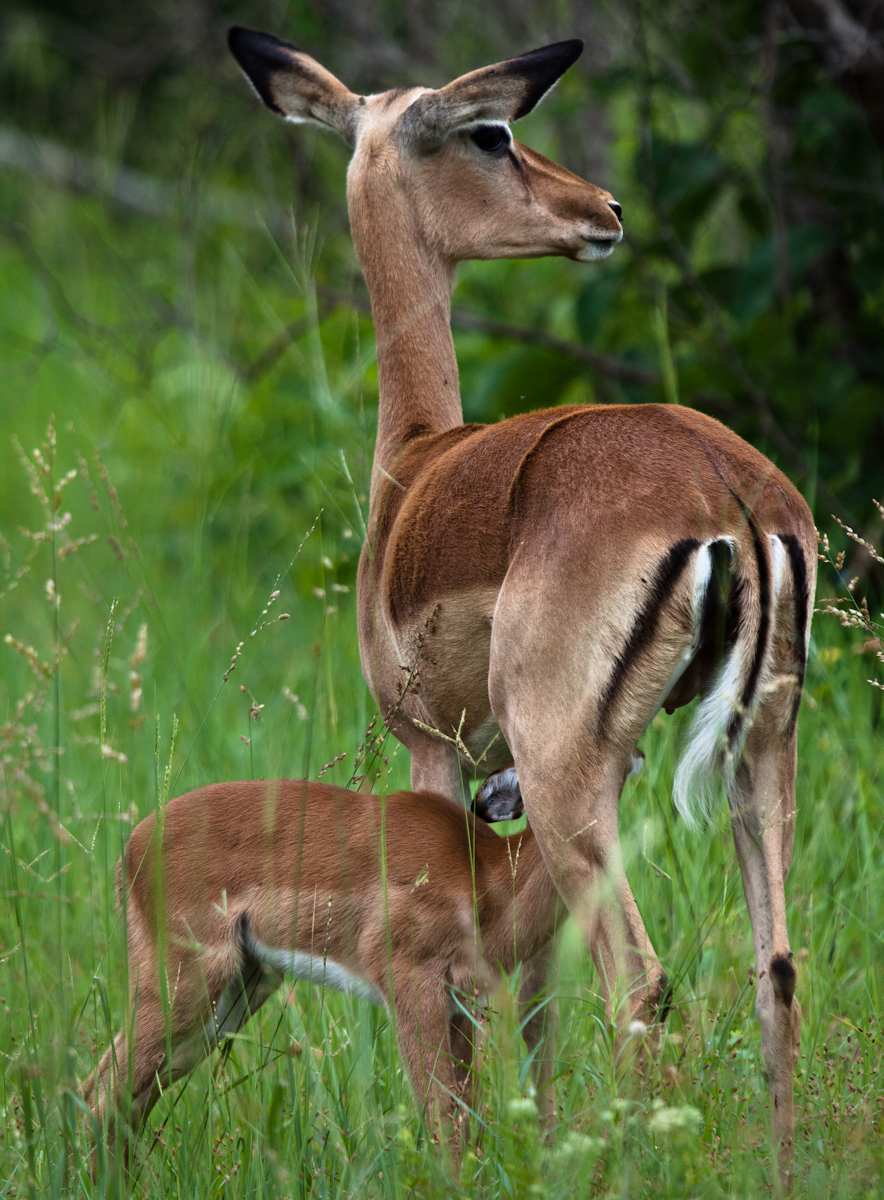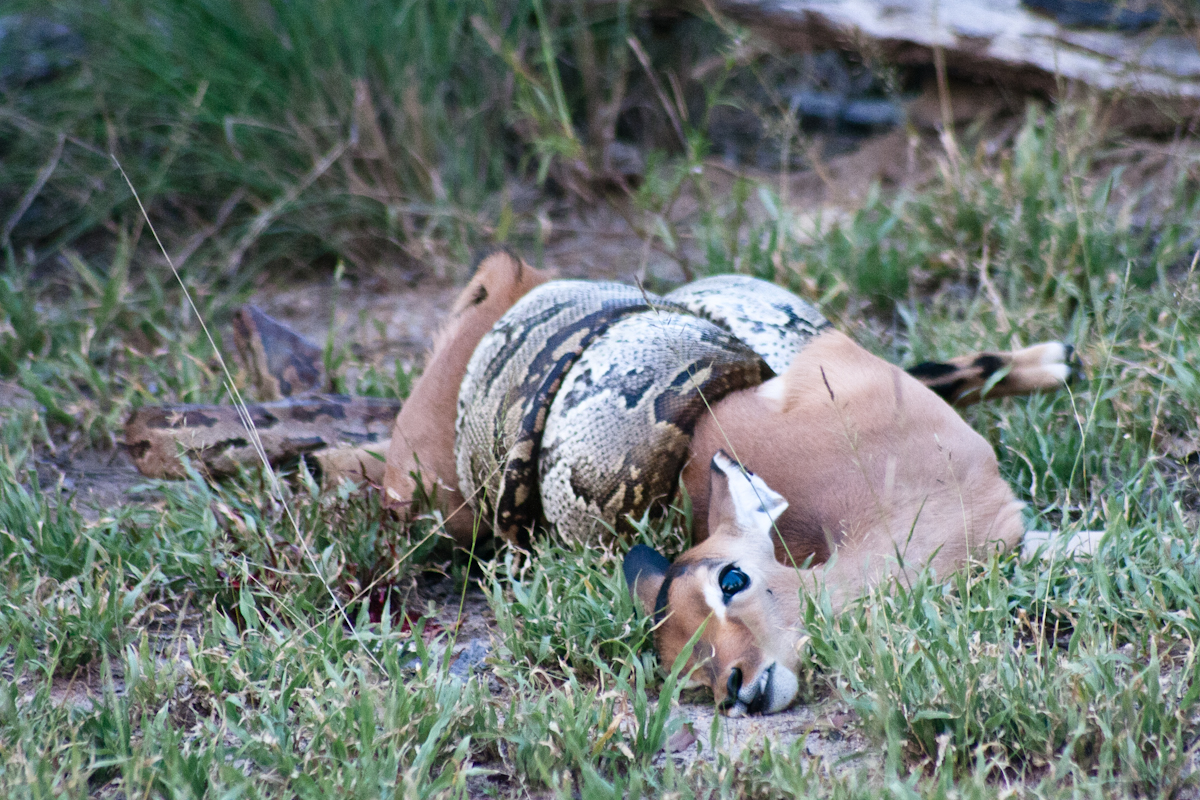serpent sustenance
on Nov 22, 2012The smell of summer wafts across the bush as the Jasmine flowers bloom. The female impala knows this time all too well and can feel that her lamb is starting to come. She separates herself from the herd looking for a safe place to help her baby into the world. She scours the bush to ensure she is alone and begins to push. The baby begins to crown and within minutes the little one falls to the ground covered in amniotic fluid.

The mother bends down to lick off the protein rich juice to try and regain some of her strength whilst still cleaning her baby. The little lamb begins to shakily fight to its feet but its new legs cave in. It is only a matter of minutes before the lamb has already started walking and running, trying to strengthen the muscles so that it is fit to be able to run from any danger.
The playfulness of the lamb is temporarily halted to take a drink of its mother’s milk and then the playing begins all over again. On one of the leg stretching runs the lamb ran straight into a trap. In the grass, lying patiently waiting to ambush something, was a huge African Rock Python and he wasn’t about miss this chance. As the impala came close enough the python lunged, sinking hundreds of needle sharp teeth into the lamb and began to coil. As the impala kicked and screamed the python patiently tightened its grip, not allowing the lamb to inhale again. In as many minutes it took for the lamb to learn to stand it had been suffocated by one of the most incredible predators out here.
It would take a further hour and a half for the python to actually swallow the youngster whole, but it is worth it. A meal like this can sustain this giant snake for up to a year but it also puts the snake at risk. With such a weight in its belly it is very cumbersome and slow and is at risk of falling prey to something else. If it were to be threatened by something, the snake would regurgitate the food and make a break for it! What an incredibly rare sighting!







